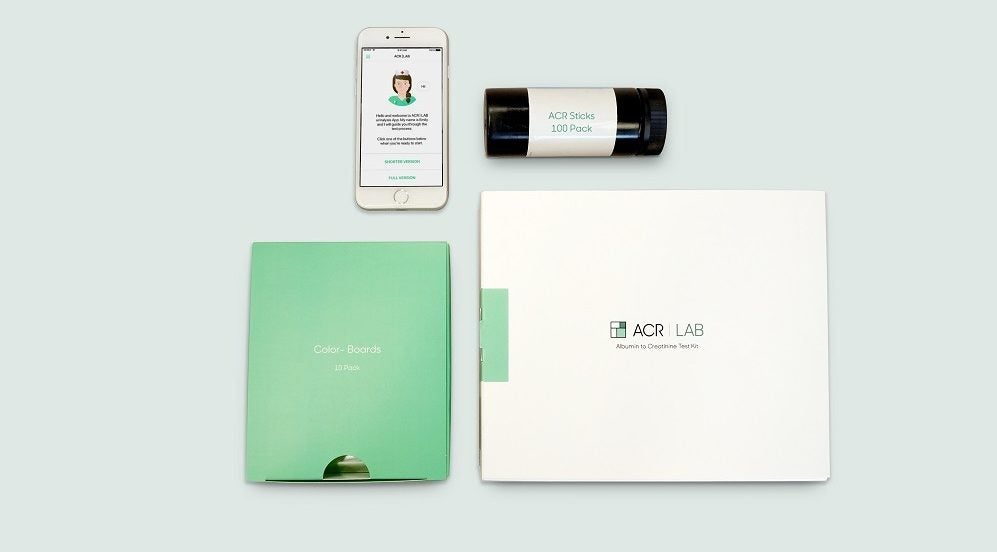
Designed for easy and highly accurate test results when diagnosing chronic kidney disease, Healthy.io says using its smartphone-based app to analyse a sample of urine is as ‘simple as taking a selfie’. Founder and CEO Yonatan Adiri discusses with NS Medical Devices how his firm is combining AI and machine learning with rigorous adherence to traditional medical science to create faster and safer diagnoses.
Samples of urine can now be instantly analysed for chronic kidney disease (CKD) using the Healthy.io smartphone-based ACR test, which has just received 510(k) clearance from the FDA.
Powered by AI, the device measures the urine albumin to creatine ratio (ACR), which can provide near-instant results revealing infections, pregnancy-related complications and certain chronic illnesses linked to kidney impairment within any clinical setting.
The company has also announced it has closed a $60m Series C funding round led by a venture capital firm Corner Ventures.
Talking about his firm’s smartphone tech, Founder and CEO Yonatan Adiri told NS Medical Devices: “CKD is one of our primary focuses alongside UTIs and antenatal screening.
“It is one of the common urinalysis use cases and has the potential of delivering major impact since CKD is such a huge problem.
He says that CKD goes undiagnosed and untreated far too often, with just 10% of Medicare patients with hypertension and 40% of those with diabetes adhering to their recommended annual testing.
“ACR testing can detect when one is at risk of CKD long before it clinically presents,” he says.
“It is important for those at risk for, or living with CKD, including those with hypertension or diabetes to be diagnosed as early as possible in order to slow progression, get the right treatment and manage their health.”

How does it compare with similar tech on the market?
It’s certainly not the only smartphone-based urinalysis provider available on the market, but Healthy.io claims to be the only company offering an FDA and European CE cleared urinalysis test equivalent to lab-based devices.
Traditional lab-based ACR tests, also known as urine microalbumin, typically take several days to provide results.
Tests will look for Albuminuria, an increased level of the protein albumin in a patient’s urine. This can be a marker for kidney damage.
Adiri said: “No one else has the breadth of test offerings, number of phones supported, and number of patients and practitioners who have used our tests.
“We are serving tens of thousands of patients across Israel’s top three health plans, the UK’s NHS and Boots the Chemist.
“Unlike others in digital health, we are rigorous in our science — working with regulators and working with potential customers and consumers/patients to test, refine and improve our product.”
The technology combines AI and machine learning for colourimetric analysis — a method of determining the concentration of a chemical element or chemical compound in a solution with the help of a colour reagent.
It also incorporates UX design, rigorous technological and clinical science to bring the ACR test to smartphones.
“Our ACR test kit uses an iOS- and Android-compatible app combined with a pre-packaged testing kit, including a specimen cup, FDA-approved dipstick, and colour-board to evaluate results,” added Adiri.
“We use a proprietary colour board and algorithm to extract the true colour of each reagent reaction to accurately match the corresponding colour block.”
Designed to be used by healthcare professionals, patients can have the test completed at any point of care, as it can be quickly and accurately read using the app to aid in diagnosing CKD.

How does the Healthy.io ACR test work to detect chronic kidney disease?
The Tel Aviv-based company plans to continue the approval process for its ACR test kit for at-home use.
Adiri says the 510(k) clearance makes it possible for any pharmacy, urgent care centre or health clinic to perform this test without the need to invest in an expensive, table-top lab device.
He said: “Making this test available at more points of care can increase the rate of testing while reducing the number of clinic visits or trips to providers they need to make.”
“The ACR provides an early indication of abnormal kidney function.
“The device uses a clinical grade in vitro diagnostic method (IVD) as used in laboratory settings for qualitative and semi-quantitative detection of creatinine and low levels of albumin (microalbumin) in a urine specimen.
“Before taking the test, users download an ACR app by clicking a link inside a text message received from their healthcare provider.”
The ACR test uses a two-parameter ACR urine test strip, which is dipped into a urine sample.
The strip should be immersed fully for about one second, then the user gently blots the strip by touching the edge of the strip on the designated absorbing pad for one second to remove any excess urine and then place it at the centre of the colour board for 60 seconds.
False negatives and positives can arise from leaving the dipstick strip in urine for too long, failing to remove excess urine or reading the colour change too quickly or slowly. Adiri says the smartphone app avoids these problems by providing step-by-step guidance.
He said: “Virtual nurse Emily tells users exactly how long to dip the reagent strip, when to touch the absorbing pad and when to place it in the colour-board provided, and when to use their phone to scan and confirm the results.”
In order to determine users understand the facts provided, they cannot move to the next information screen without confirming they have understood and carried out the instructions at each stage.
The ACR app provides an accurate interpretation of any changes because it references coloured squares on the colour-board provided to eliminate any variations due to different lighting conditions and phones.
He added: “We are excited to continue growing our product offering and look forward to sharing news about new products as they are ready for further studies and market roll-out.”






